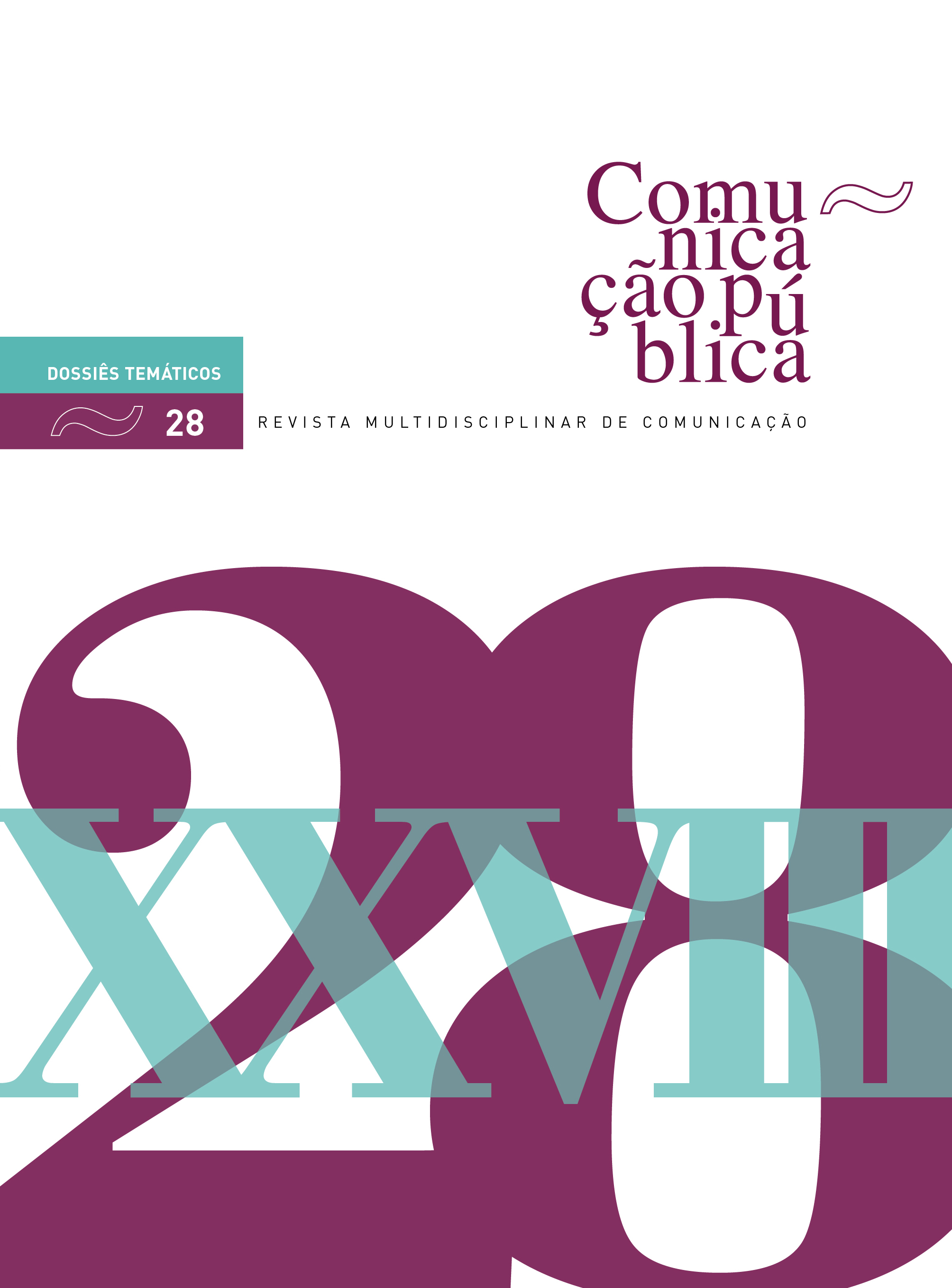Specialized professionals and source recipients
photography in the context of ‘post-truth’
DOI:
https://doi.org/10.4000/cp.7096Keywords:
photojournalism, post-truth, truth, fake photographsAbstract
Digital technologies offered technical-structural support for changes in the forms of communicability and broke the monopoly of journalistic information, as an organizer of meaning in the social world. This article is not based on the assumption of the end of journalism, but highlights the of the receptors as producers of information – because of which we will call them source-receptors – and professionals in Big Data for the manipulation of information on a large scale and in a specialized way. From this scenario, the objective is to investigate photographic manipulation in the treatment of information for the purpose of instigating reflection and the challenges of the multiplicity of views in a context where the truth has been detaching itself from its Cartesian position of the modern age and revealing its combinations, contradictions, affections amd imagination and showing itself as a political instrument to reinforce personal beliefs.
Downloads
References
Barthes, R. (1984a). A câmara clara. São Paulo: Nova Fronteira.
Barthes, R. (1984b). A mensagem fotográfica. In R. Barthes, O óbvio e o obtuso: Ensaios críticos III. Lisboa: Edições 70.
Benedetti, M., & Gadret, D. (2017). O ethos do repórter de TV da Rede Globo. Intexto, 39, 60-79.
Benjamin, W. (1994). Pequena história da fotografia. In W. Benjamin, Magia e técnica, arte e politica: Ensaios sobre literatura e história da cultura (S. P. Rouanet, Trad.) (7ª ed.). São Paulo: Brasiliense. (Texto originalmente publicado em 1931)
Benjamin, W. (2012). Experiência e pobreza. In J. Barrento (Ed.), O anjo da história (J. Barrento, Trad.) (pp. 85-90). Belo Horizonte: Autêntica. (Texto originalmente publicado em 1933)
Benjamin, W. (2018). O contador de histórias: Reflexões sobre a obra de Nikolai Leskov. In J. Barrento (Ed.), Linguagem, tradução, literatura; Filosofia, teoria e crítica (J. Barrento, Trad.) (pp. 147-178). Belo Horizonte: Autêntica. (Texto originalmente publicado em 1936)
Charaudeau, P. (2009). Discurso das mídias. São Paulo: Contexto.
Chartier, R (2012, 22 julho). O todo e a parte (Entrevistado por Amarilis Lage para a Valor Econômico). Disponível em https://valor.globo.com/eu-e/noticia/2012/04/13/o-todo-e-a-parte.ghtml
Deleuze, G. (1976). Nietzsche e a filosofia. Rio de Janeiro: Sociedade Cultural.
Dubois, P. (1993). O ato fotográfico e outros ensaios. Campinas: Papirus.
Festinger, L. (1957). A theory of cognitive dissonance. Stanford: Stanford University Press.
Feyerabend, P. (2007). Contra o método. São Paulo: UNESP.
Flusser, V. (1985). Filosofia da caixa preta: Ensaios para uma futura filosofia da fotografia. São Paulo: Hucitec.
Foucault, M. (1999a). A ordem do discurso: Aula inaugural no Collège de France, pronunciada em 2 de dezembro de 1970 (L.F.A. Sampaio, Trad.) (5ª. ed.). São Paulo: Loyola. (Livro originalmente publicado em 1971)
Foucault, M. (1999b). As palavras e as coisas (S.T. Muchail, Trad.) (8ª ed.). São Paulo: Martins Fontes. (Livro originalmente publicado em 1966)
Gomes, I. (2007). Questões de método na análise do telejornalismo: Premissas, conceitos, operadores de análise. E-Compós, 8. https://doi.org/10.30962/ec.126
Haddad, G. (2013). Ethos prévio e ethos discursivo: O exemplo de Romain Rolland. In R. Amossy (Org.), Imagens de si no discurso: A construção do ethos (pp. 145-166). São Paulo: Contexto.
Hall, S., Chrichter, C., Jefferson, T., Clarke, J., & Roberts, B. (1993). A produção social das notícias: o mugging nos media. In N. Traquina (Org.), Jornalismo: Questões, teorias e “estórias”. Lisboa: Vega.
Kossoy, B. (2001). Fotografia e história (2ª ed.). São Paulo: Ateliê Editorial.
Lima, I. (1988). A fotografia é a sua linguagem. Rio de Janeiro: Editora Espaço Tempo.
Machado, A. (1984). A ilusão especular: Introdução à fotografia. São Paulo: Brasiliense.
Maingueneau, D. (2005). Ethos, cenografia, incorporação. In R. Amossy (Org.), Imagens de si no discurso: A construção do ethos (pp. 69-91). São Paulo: Contexto.
Mello, P. (2018, 18 outubro). Empresários bancam campanha contra o PT pelo WhatsApp. Folha de São Paulo. Disponível em: https://www1.folha.uol.com.br/poder/2018/10/empresarios-bancam-campanha-contra-o-pt-pelo-whatsapp.shtml
Neto, L.F. (2018). Fotografia e pós-fotografia: do controle ao descontrole. Revista Observatório, 4, 220-250.
Nietzsche, F. (1999). Genealogia da moral: Uma polêmica (P.C. Souza, Trad.). São Paulo: Companhia das Letras.(Livro originalmente publicado em 1887)
Penna, T. (2009). A nova barbárie segundo Benjamin. Anais do IV Colóquio Internacional Cidadania Cultural: Diálogos de gerações. Campina Grande: Editora EDUEPB.
Santaella, L. (2018) A pós-verdade é verdadeira ou falsa?. São Paulo: Estação das Letras e Cores.
Thierry, D. (2011). Fotojornalismo e imagens locais: Dois pontos de vista, duas profissões?. Brazilian Journalism Research, 7(1), 69-89. DOI : 10.25200/BJR.v7n1.2011.286
Traquina, N.(2004). Teorias do jornalismo. Florianópolis: Insular.
Downloads
Published
Issue
Section
License
Copyright (c) 2020 Direitos do Autor (c) 2020

This work is licensed under a Creative Commons Attribution-NonCommercial 4.0 International License.
Os conteúdos da Comunicação Pública estão licenciados com uma licença Creative Commons - Atribuição-NãoComercial 4.0 Internacional.


